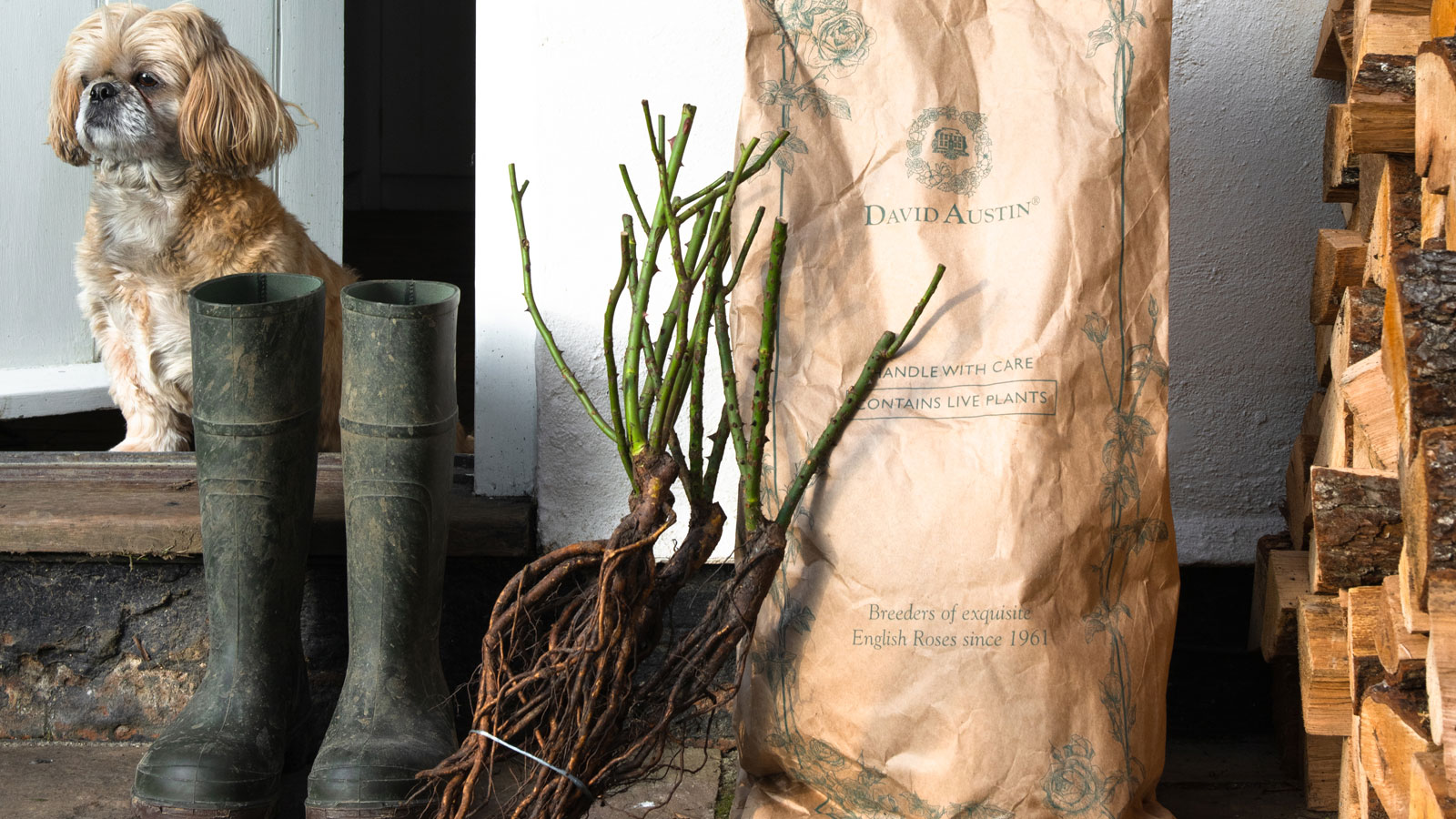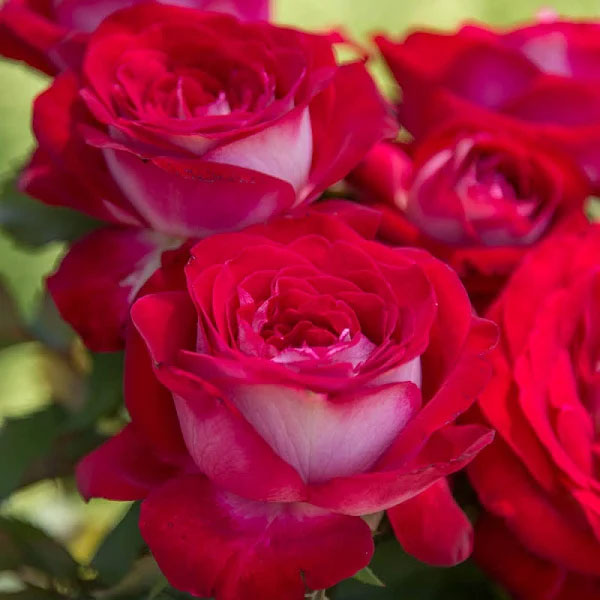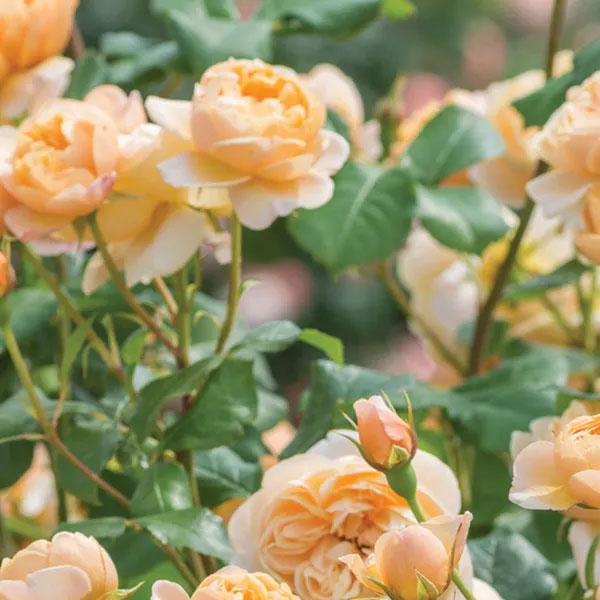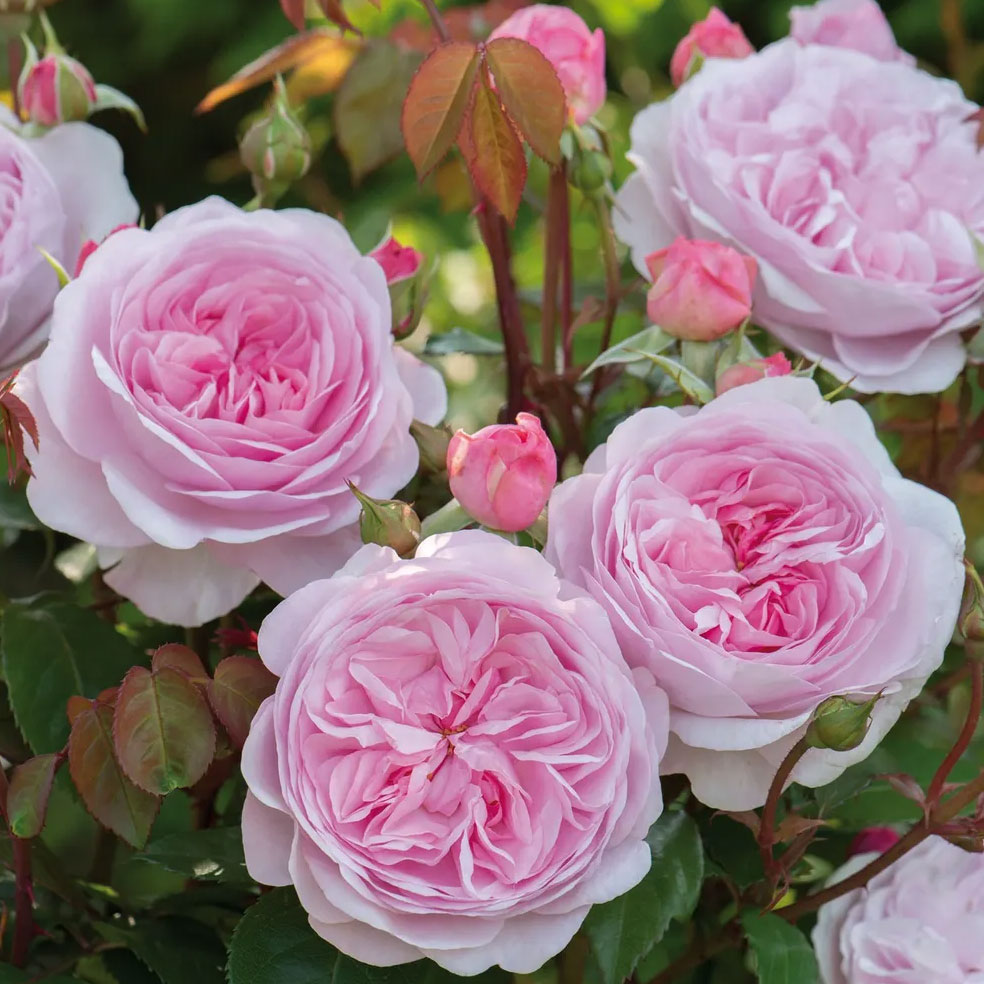How to Plant Bare Root Roses, and When to do it to Get the Best Results
It might be cold out but there's never been a better time to plant roses to fill your garden with gorgeous fragrant blooms in summer

The name doesn't sound entirely hopeful and they might look half dead when they arrive but if you plant bare root roses now you'll soon discover it's an affordable and easy way to add lots of these beautiful blooms to your garden, as well as being the planet-friendly option because it's plastic free.
Bare root roses are dug from the ground while dormant. They are sold without soil or foliage, and packed to prevent the roots drying out before being sent out to you. Despite at first resembling a bunch of twigs they tend to be good quality, with stronger roots than pot-grown varieties. In other good news they are cheaper than roses sold in containers too.
There are a few simple things you need to know to give your rose plants the best possible start on their growing journey in your modern garden. Follow our guide on how to plant bare root roses to guarantee yourself fabulous flowers all summer long.

When is the best time to plant bare root roses?
Finding out the best time to do it is a key part of how to plant bare root plants, including roses, successfully. The best time to plant bare root roses is during the dormant months of winter, as long as the ground isn't frozen or badly waterlogged. They are only available from November until the end of March (known as 'bare root season') anyway, so you would struggle to plant them at any other time of the year.
It's usually best to order them online from specialist nurseries such as David Austin Roses, which ship pre-orders of bare root roses at the right time for planting in your zone. Your bare root rose bushes might look half dead when they arrive but don't be put off by their appearance. As the ground is damp in winter your plants will soon get established and put down strong roots before coming into leaf in spring.
'There are definite advantages to choosing bare root roses over potted roses,' says Alex Kantor of My Perfect Plants nursery, based in North Florida. 'Bare root roses can be planted earlier in the season, providing an opportunity to establish roots before the growing season begins.'
Bare root roses should be planted as soon as they arrive. If the ground is frozen or waterlogged, or you are experiencing drought, your bare root roses should be unpacked and kept in a container of slightly moist compost, then planted as soon as conditions improve and you can get them in the ground.
The Livingetc newsletters are your inside source for what’s shaping interiors now - and what’s next. Discover trend forecasts, smart style ideas, and curated shopping inspiration that brings design to life. Subscribe today and stay ahead of the curve.

How to plant bare root roses step by step
Here are five simple steps to follow when planting bare root roses in your garden for the best results.
1. Rehydrate bare root rose plants

Bare root roses require minimal preparation before planting but the first thing to do is to make sure they don't go into the ground thirsty.
'The most important step is to hydrate the roots by soaking them in a large pot for a few hours,' says Jen McDonald, garden expert and co-founder of Garden Girls based in Houston, Texas. 'Bare root roses are dormant. The soaking period is critical to “wake up” the plants in preparation for growth. Depending on your zone, bare root roses can be planted up to March. In the deep south, I plant my bare root roses in late January, which means that I still have one month of very cold temperatures.'
Rehydrate your rose in a bucket of water for a minimum of 2 hours prior to planting. Then check your plant over.
'Trim any damaged roots on the bare root rose plant, and prune back the branches to be around 12 inches in length,' says Alex Kantor. 'Make the pruning cut about 1/4 inch above an outward-facing bud.'
2. Prep the soil ahead of planting

Good soil preparation is key to successful bare rose planting. Start by digging a hole that's twice the width of the rose's root ball and deep enough to accommodate the roots comfortably. Add organic matter, such as well-rotted compost or aged manure, to the soil to improve its structure and fertility.
'Select a site that gets 6-8 hours of sunlight per day,' says Jen McDonald. 'Give your roses a spot with room to grow, and plant on a day when your flower beds aren't frozen.'
Bare root roses thrive in well-drained soil. Make sure the area is also free from any competing tree roots and large shrubs that could steal nutrients and water from your new rose plants.
'Dig over the soil thoroughly, using a garden fork, and remove any weeds or large stones,' advises the team of rose consultants at David Austin Roses. 'This will ensure that the new roots can venture freely into their new environment. Roses will grow in all soil types.'
3. Dig a hole for the rose plant

Dig a hole big enough for the rose's roots, approximately 16 inches wide by 16 inches deep, using a spade.
'Break up the soil at the base of the hole with a fork, and mix a spadeful of well-rotted manure or organic soil improver in with the soil at the bottom of the hole,' say the David Austin team. 'Also, mix two spadefuls of soil improver with the soil removed from the hole.'
4. Plant the bare root rose

Remove the bare root rose from the bucket of water and, while holding the rose over the planting hole, sprinkle the roots with mycorrhizal fungi. This encourages a healthy root system and better nutrient uptake, as well as more abundant flowers.
Position the rose in the centre of the hole. 'Spread out the roots carefully,' says Alex Kantor. 'Make sure the bud union (the swollen area where the rose was grafted onto the rootstock) is at or slightly above the soil level to prevent rotting.'
The bottom of the stems should be 2 inches below the top of the hole. Use a bamboo cane to help.
5. Backfill, firm in and water

Backfill around the roots of the rose, using the soil that was originally dug out to make the hole. Then lightly firm the soil around the rose to ensure it's securely planted and there are no air pockets.
Next water the rose thoroughly to help settle the soil and hydrate the roots.
'It's also a good idea to apply a layer of organic mulch around the base of the rose plant to help retain moisture, suppress weeds, and regulate soil temperature,' says Alex Kantor. 'In addition, regularly monitor the moisture levels in the soil, and water the roses when the top inch of soil feels dry.'
How long do bare root roses take to grow?
It can take up to several weeks for a bare root rose to put out its first flush of leaves. Generally things start developing when the ground begins to warm up as winter shifts into spring.
This means if you planted a bare root rose in winter, you can expect to see the first signs of leafy growth in spring. They will take a few months to start flowering but most roses should bloom in the first year.
Can you plant a bare root rose in a container?
If you're limited to container gardening in your outdoor space, you can plant a bare root rose in a container. If you have chosen a scented variety make sure you position the pot where you will get most enjoyment from it, such as on a balcony, or near a path or seating area.
'Bare root roses are perfect for planting in containers, in fact planting bare root is easier than planting a shrub, sets the plants up for better success, and the flowers might even bloom earlier,' says Kelly Funk, President at rose specialists Jackson & Perkins, based in Hodges, South Carolina. 'Container gardening offers flexibility and can be a viable option for growing roses in various settings. They add an elegant and colorful focal point to patios, porches, and balconies.'
Pre-soak your bare root rose as before. Choose a decent sized pot, at least 18 inches deep and 18 inches wide, and add some drainage material to the bottom. Fill with potting mix, firming occasionally to remove any air pockets.
Position the rose centrally, and when you're happy with the depth of the rose continue adding the potting mix, firming as you go. Water well. If the weather is particularly dry or windy in the immediate weeks after planting the bare root rose keep an eye on it and water additionally as necessary.
'Check your growing zone too, as you may need to protect the container from harsh winter conditions,' says Kelly. 'Container-grown plants generally are experiencing 1-2 zones colder because they have less insulation. You can simply bring the container closer to the house to protect it during the winter and move it back after the last chance of frost has passed.'
While it might not look great at first your container grown bare root rose will undergo a transformation, and you will soon be enjoying stunning blooms once you've nail how to plant bare root roses.

Lifestyle journalist Sarah Wilson writes about garden design and landscaping trends. She has studied introductory garden and landscape design, and also has an RHS Level 2 qualification in the Principles of Plant Growth and Development. She is a regular contributor to Livingetc.com, and also writes for Homes & Gardens, Country Living, Country Homes & Interiors, and Modern Gardens magazines. Her first job was at Elle magazine, during which time a trip to the beautiful La Colombe d'Or in St-Paul-de-Vence led to an interest in writing about all things botanical. Later as lifestyle editor at Country Homes & Interiors magazine one of the highlights were the run of captivating country gardens that were featured.


